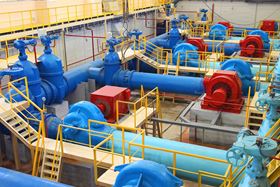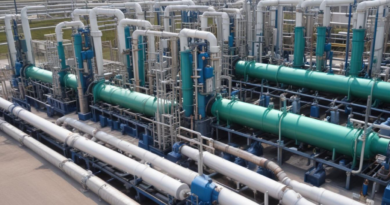how to select a pump for high viscosity fluids
Understanding the behavior of fluids is essential when selecting the right pumping equipment. Viscosity, a fundamental property of fluids, measures a fluid’s resistance to flow. High viscosity fluids, such as oils, syrups, and certain chemical solutions, require specialized high viscosity pumps to ensure efficient and reliable operation.
Several factors influence fluid viscosity:
- Temperature: Generally, viscosity decreases as temperature increases. Heating a fluid can make it easier to pump, but excessive temperatures may degrade the fluid or pump materials.
- Shear Rate: Some fluids exhibit non-Newtonian behavior, where viscosity changes under different shear rates. Understanding whether a fluid is shear-thinning or shear-thickening is crucial for pump selection.
- Composition: The presence of solids, polymers, or other additives can significantly alter a fluid’s viscosity. Consistent composition is necessary to maintain predictable pumping performance.
Accurate measurement of viscosity is critical for the proper selection of pumps. Common methods and units for measuring viscosity include:
| Method | Description | Units |
|---|---|---|
| Brookfield Viscometer | Measures viscosity by rotating a spindle in the fluid and assessing resistance. | cP (centipoise) |
| Bingham Plastic Model | Describes fluids that behave as a solid until a certain yield stress is applied. | Pa·s (Pascal-seconds) |
| Kinematic Viscosity | Ratio of dynamic viscosity to fluid density, indicating flow characteristics. | cSt (centistokes) |
Understanding the different types of viscosity and their measurement techniques aids in the effective selection of pumps tailored to handle specific fluid characteristics. This ensures optimal performance, minimizes wear and tear, and enhances the longevity of the pumping system.
types of pumps for high viscosity
When dealing with high viscosity fluids, selecting the appropriate pump type is crucial to ensure efficient operation and longevity of the system. Various high viscosity pumps are designed to handle thick, resistant fluids, each with distinct mechanisms and advantages. The following outlines the primary types of pumps suitable for high viscosity applications:
- Gear Pumps: These are a type of positive displacement pump that use the meshing of gears to pump fluid by displacement. They are highly effective for pumping thick oils and other viscous liquids due to their ability to maintain a constant flow rate regardless of pressure changes.
- Lobe Pumps: Featuring two or more lobes that rotate within the pump casing, lobe pumps are excellent for handling shear-sensitive, high viscosity fluids. They provide smooth, pulsation-free flow, making them ideal for applications like food processing and pharmaceuticals.
- Progressive Cavity Pumps: Also known as eccentric screw pumps, these pumps consist of a helical rotor rotating inside a double helical stator. They are particularly suited for highly viscous and shear-thinning fluids, offering precise flow control and minimal pulsation.
- Screw Pumps: Utilizing one or multiple screws to move fluid along the pump axis, screw pumps can handle very high viscosity fluids with moderate shear levels. They are durable and capable of continuous operation, making them suitable for heavy-duty industrial applications.
- Peristaltic Pumps: These pumps move fluid through a flexible tube by compressing and releasing it with rollers or shoes. While generally used for lower viscosity fluids, specialized peristaltic pumps can be adapted for higher viscosity applications where gentle handling is required.
A comparative overview of these pump types is presented below:
| Pump Type | Mechanism | Advantages | Typical Applications |
|---|---|---|---|
| Gear Pumps | Meshing gears create displacement | Constant flow rate, reliable for thick fluids | Lubricant transfer, hydraulic systems |
| Lobe Pumps | Rotating lobes displace fluid | Smooth, pulsation-free flow, gentle handling | Food and beverage, pharmaceuticals |
| Progressive Cavity Pumps | Helical rotor within a helical stator | Precise flow control, minimal shear | Oil and gas, wastewater treatment |
| Screw Pumps | Screws rotate to move fluid | Handles very high viscosity, durable | Heavy industrial processes, chemical handling |
| Peristaltic Pumps | Compressing flexible tubes with rollers | Gentle handling, contamination-free | Medical devices, specialized chemical transfer |
When making a selection among these types of pumps, it is essential to consider factors such as the specific viscosity of the fluid, required flow rate, pressure conditions, and the potential for shear-induced degradation of the fluid. Additionally, the compatibility of pump materials with the fluid composition and the ease of maintenance should influence the decision-making process. By carefully evaluating these aspects, engineers can choose the most appropriate high viscosity pump to ensure efficient and reliable system performance.
selecting pump materials
Selecting the appropriate materials for pump components is crucial to ensure the longevity and efficient operation of high viscosity pumps. Material selection directly impacts the pump’s ability to withstand the demanding conditions associated with handling thick, resistant fluids. The following factors should be meticulously evaluated during the selection process:
- Chemical Compatibility: The pump materials must be resistant to the specific chemicals present in the fluid to prevent corrosion, degradation, or contamination. Understanding the chemical composition of the fluid is essential to select materials that will not react adversely.
- Temperature Resistance: High viscosity fluids often require elevated temperatures to reduce their viscosity for ease of pumping. Materials must maintain their structural integrity and performance characteristics under these temperature conditions.
- Wear and Abrasion Resistance: Viscous fluids may contain particulates or cause significant friction, leading to wear. Selecting materials with high abrasion resistance extends the pump’s operational lifespan.
- Corrosion Resistance: Exposure to corrosive fluids necessitates the use of materials that can resist corrosion, thereby preventing failure and maintaining pump efficiency.
- Mechanical Strength and Durability: The pump must endure the mechanical stresses associated with high viscosity pumping, including pressure fluctuations and continuous operation. Durable materials ensure consistent performance and reduce maintenance requirements.
Common materials used in high viscosity pumps include:
| Component | Common Materials | Properties | Applications |
|---|---|---|---|
| Impellers and Rotors | Stainless Steel, Hardened Steel, Chrome-Plated Alloys | High wear resistance, corrosion-resistant | Oil and gas, chemical processing |
| Casings | Cast Iron, Duplex Stainless Steel, Hastelloy | Strong structural integrity, corrosion-resistant | Heavy industrial applications, aggressive chemicals |
| Seals and Gaskets | PTFE, Viton, EPDM | Chemical inertness, temperature resistance | Pharmaceuticals, food processing |
| Piping and Fittings | Carbon Steel, PVC, PP | Versatile, easy to fabricate | General industrial use, water and wastewater |
When evaluating specific materials, consider the following guidelines:
- Assess Fluid Composition: Identify all chemical constituents of the fluid to determine potential reactions with pump materials.
- Determine Operating Temperatures: Ensure materials can withstand the maximum and minimum temperatures encountered during operation.
- Evaluate Mechanical Stresses: Calculate the mechanical forces exerted on pump components and select materials with adequate strength and durability.
- Consider Maintenance and Replacement: Choose materials that simplify maintenance procedures and allow for easy replacement of wear-prone parts.
- Balance Cost and Performance: While high-performance materials may offer superior properties, it is essential to balance these benefits against the overall cost to achieve cost-effective pump solutions.
A comparative overview of common pump materials is provided below:
| Material | Advantages | Disadvantages | Best Suited For |
|---|---|---|---|
| Stainless Steel | Excellent corrosion resistance, high strength | Higher cost compared to carbon steel | Food and beverage, pharmaceuticals |
| PTFE (Teflon) | Chemically inert, excellent temperature resistance | Lower mechanical strength | Handling aggressive chemicals, seal applications |
| Hardened Steel | Superior wear resistance, high durability | Susceptible to corrosion without proper treatment | Abrasive fluid applications, oil and gas |
| Viton | Good chemical resistance, flexible | Limited temperature range | Seals and gaskets in chemical processing |
| Duplex Stainless Steel | High strength and corrosion resistance | More expensive than standard stainless steel | Marine applications, chemical industries |
In addition to selecting the right materials for the pump components, it is essential to consider the entire pump assembly’s compatibility with the fluid. This holistic approach ensures that all parts work harmoniously, reducing the risk of material-induced failures and enhancing the overall performance of high viscosity pumps. Proper material selection not only extends the pump’s operational life but also minimizes downtime and maintenance costs, thereby contributing to a more efficient and reliable pumping system.



